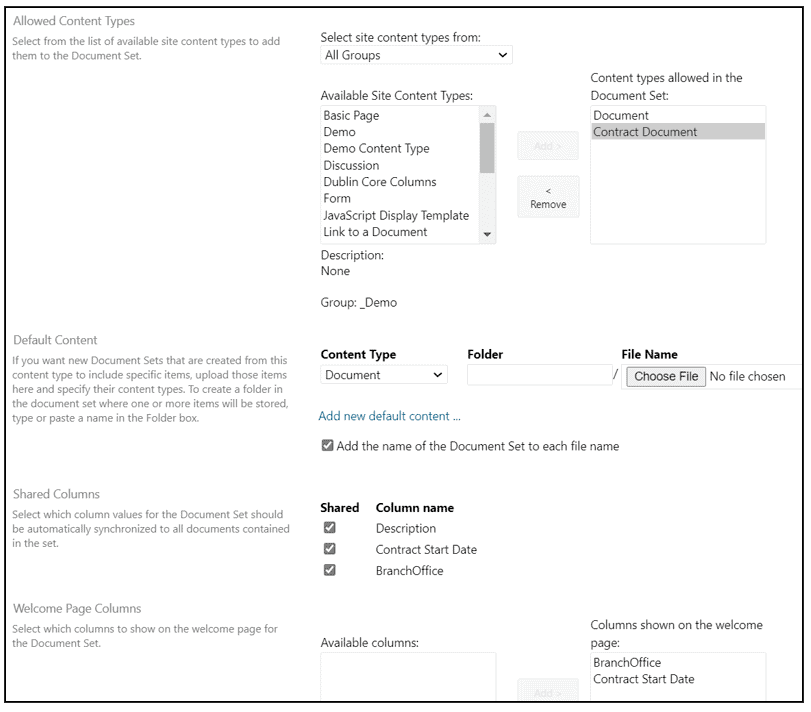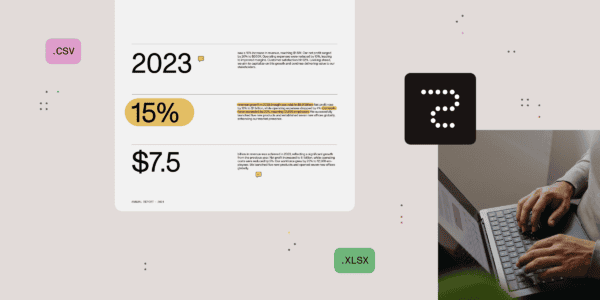I’m a fan of Document Sets for complex document management scenarios. Document Sets are a great way to store related documents together (folder style) while also adding metadata that can inherit to each document stored in the document set.
The use case for Document Sets is usually where you have a requirement to store related documents in one place and also want the ability to tag some metadata to each document. For example, in Contract Management solutions we often store not only the signed contract, but also correspondence, contract variations, schedules etc. All documents related to a specific contract are tagged with the same contract number and supplier name. Similar requirements often apply for process management, quality systems, client folders, export documentation and many other cases.
To enabled Document Sets and add them to a Document Library, follow these steps:
- In SharePoint Site Settings > Site Collection Features > Enable Document Sets
- In SharePoint Site Settings > Site Content Types
- Create a new Content Type with Document Set as the Parent
- Configure the Content Type with Site Columns (Metadata columns)
- Configure which Site Columns inherit to documents in the document Set
- Configure which Content Types (other document content types) can be used in the Document Set
- In your Documet Library
- Choose Library Settings > Advanced Settings > Enable Managed Content Types
- Add the Document Set to the Library
- Add any other Content Types to the Library

A user with Edit rights to the library can now create a new Document Set in the library. Creating or uploading a document into the Document Set will add meta data to the document automatically.

You can also have additional metadata columns that aren’t included in the Document Set, either configured on the library or with Document Content Types. For example, you Document Set might have the Contract Number, Supplier and Contract Status. The Document Content Types may also have Start Date and Review date (at the document level).
A few other Document Set facts:
- Document Sets are based on Folders, and appear as folders from Windows Explorer or OneDrive Shortcuts.
- Metadata does not appear in Windows Explorer.
- Views that hide folders will also hide Document Sets.
- You can create folders inside a Document Set, but cannot create a Document Set inside a Document Set.
Document Sets aren’t the right solution for every scenario. You can also use metadata on documents themselves to group files together or even standard Folders. Think about the use cases you have before embarking on the Document Set adventure, there are many benefits but some users may find the complexity isn’t worth the effort.
In 2011 I started Canterbury Business Solutions with two business partners. We build solutions on the Microsoft stack, usually around SharePoint, .NET and SQL Server. Our business is built on experience and technical expertise built up over nearly 25 years in the IT industry.
In March 2015 we renamed our business to Stratos Technology Partners to signify the growth of our business outside of our home town and the strength of the partnerships we have with our clients.
On the 1st January 2017 I was received my first Microsoft MVP award for Office Apps and Services. Thank you to everyone who helped make this happen for me!
This blog is part of SharePoint Week. For more great content, click here
Reference:
Knutson, S. (2021). SharePoint Document Sets. Available at: https://steveknutson.blog/2021/05/28/creating-a-custom-sharepoint-news-digest-with-power-automate/ [Accessed: 30th August 2021].









 Using a SharePoint Online list as a Knowledge source via ACTIONS in Copilot AI Studio
Using a SharePoint Online list as a Knowledge source via ACTIONS in Copilot AI Studio
